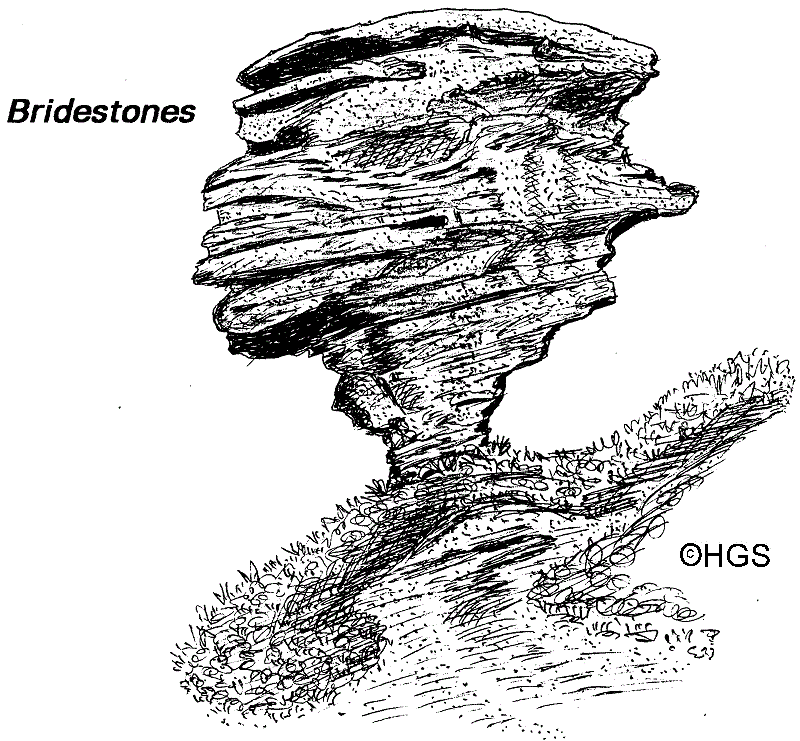

Humberside Geologist no 10
published 1992

The BRIDESTONES in the Dalby Forest are well worth a day drive. They are spectacularly-shaped rock sculptures which have been formed by nature. The sandstone of Middle Jurassic age has been sculptured by wind-blown particles of ice during the Ice Age to form these top-heavy shapes.
It is easy to reach the Bridestones Nature Walk. About half way through the Dalby Forest Drive a car park is located close by the western end of Staindale Lake. A short walk through the forest brings one out into open scenery where the Bridestones are located.
Depending upon one's inclination, one may either return to the car park back-tracking through the forest or one may continue along the footpath to make a round-trip. If one chooses the latter one returns on a path along Needle Point down into the dale and then skirting the forest back to the car park.
The spectacular shapes of these rocks is the result of weathering; the main force of the ice-blasting being near the ground and tapering upwards. But the texture of the weathering is similar to manmade monuments and examples may be seen in Whitby. The monument at the car park by Whitby Abbey as well as some bollards down by the harbour exhibit a similar weathering texture. But the distinctive difference is that the Bridestones have been beautifully slimmed at the base by ice-blasting.
Dalby Forest can be reached by car by driving north on the Whitby road from Thornton-Le-Dale which is about three miles east of Pickering on the A170. The Bridestones Nature Reserve is managed by The National Trust and relies upon support from the public.
copyright Hull Geological Society 2021